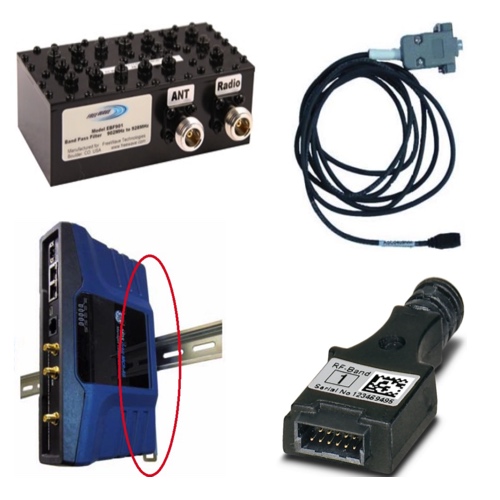Industrial Radio Accessories

Industrial radio communication systems rely on a range of accessories to make them work effectively and reliably. These include mounting hardware, which keeps everything secure and tidy; power supplies, which ensure that the radios keep on working when needed; and enclosures, which protect all those electronics from the environment. Radio accessory makers have to understand all these different components and how they must work together if industrial radio systems are to perform at their best.
For industrial radios to work without interruption, reliable power supplies and batteries are essential. These accessories range from simple AC/DC power adapters for low-power applications to complex systems for programming and powering transmitters in off-grid or hard-to-reach locations. Their common purpose is to provide consistent, reliable power under a variety of conditions. Power supply management systems further enhance reliability by making sure the key subsystems that handle alternate power sources don't step on each other's turf accidentally.
Secure and efficient connections between radios, antennas, and other accessories are made possible by cables and connectors. High-quality coaxial cables minimize signal loss and interference, guaranteeing clear communication. Because of their consistency in specifications—length, diameter, connector type—a coaxial cable is like a well-oiled machine: It works as expected every time it's used.
More Information about Industrial Radio Accessories
Other mobile radio accessories and two-way radio accessories include products such as external speakers, speaker microphones, belt clips, chargers and headsets. Two-way radios stay connected with a large selection of accessories such as repeaters, high-gain antennas, signal boosters, and quality batteries.
Serial vs Ethernet Radios
There are many different communication protocols that can be used when selecting a radio. The type of protocol being used may depend on the application, time frame the hardware was installed, existing hardware that is already in place and many other factors. What is important to understand is that most of these protocols fall into two generic families: Serial-based protocols or Ethernet-based protocols. Examples of Serial-based protocols include: Modbus RTU, RS-232, RS-485 and Profibus. Examples of Ethernet-based protocols include: Modbus TCP, Ethernet IP and Profinet. The differences that exist in these protocols has a lot to do with data transmission speeds.
Serial-based protocols have a much more limited data transmission capacity compared to Ethernet-based protocols, however, they do not require a connection strength as strong as Ethernet-based protocols. This is beneficial in situations where the radio connection may be limited because of physical obstructions or long distances. Ethernet-based protocols have faster data transmission capabilities and are becoming much more common than Serial-based protocols. By understanding the differences between these two types of protocols, you will be better equipped to select the radio that will work best for your specific application.

